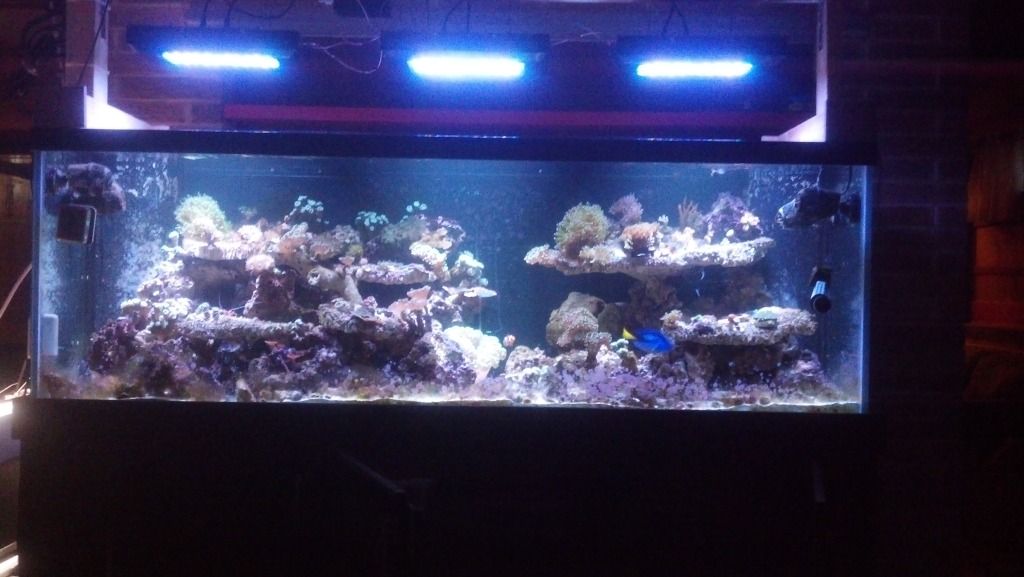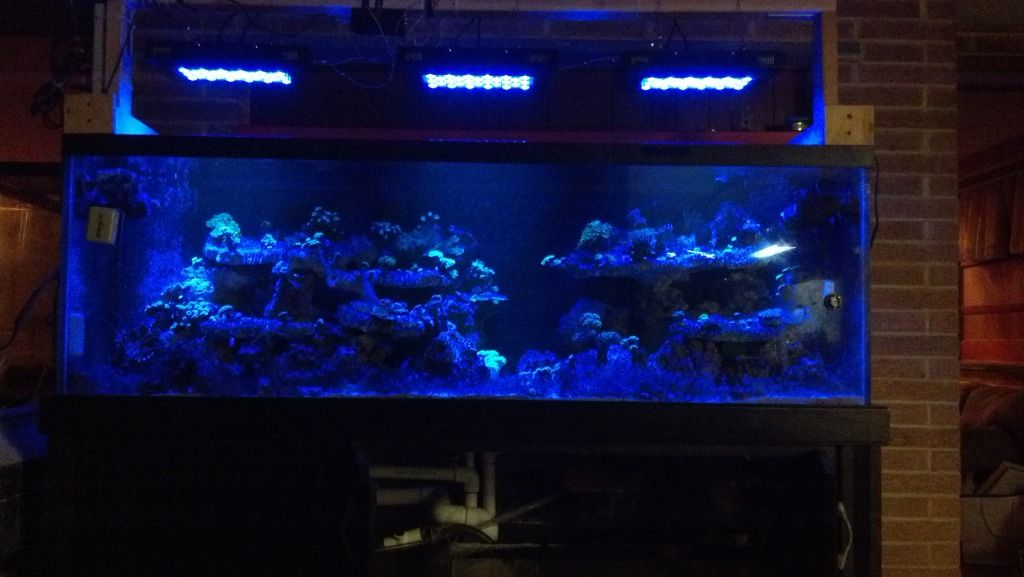It’s taken a long time, but my LEDs are finally on the tank!! YahoO
For those who don’t know, I started this conversation in my intro thread. Here is the general idea:
[quote=“bnelson, post:8, topic:6373”]
[quote=“reefman66, post:4, topic:6373”]
:Welcome) to DRC Bryant. Even pics from the old tank looks good. Please do post some current ones too.
What do the D120 led fixtures look like? How are you planning to hook it up to a controller?[/quote]
Here are some pics of the fixture. I got it off alliexpress.com. They are your typical Chinese dimmable led fixture with 90 deg optics and cost $170-180. What’s great though is these fixtures were completely custom. I just sent them a layout and that was that. I ended up with 14 blue, 14 royal blue, 4 violet, 2 green, 2 red, 8 3500K and 11 6500K.
The fixture came with nobs for dimming, but I want to do a sun rise/set program with a lunar cycle. So I took the fixtures apart and was shocked at the quality inside, everything was laid out well and they were even using Texas Instruments ICs. The downside though is that the drivers only take in 0-10V control signal not PWM that most controllers output. So I have 2 options to hook them up. The one I’m currently pursuing is to just buy some brushed speed controllers for RC planes/cars. I’m just going to buy 2, one for each channel. These take in a pwm control signal and output an analog voltage. This option is simple and takes the least amount of work. The backup plan is to make my own simple circuit which would consist of an RC low pass filter (converts pwm to analog) and an op-amp (takes the 5V from the board and gains it to 10V). I’ll keep you guys posted as things progress. I’m trying to pull this off before the swap.
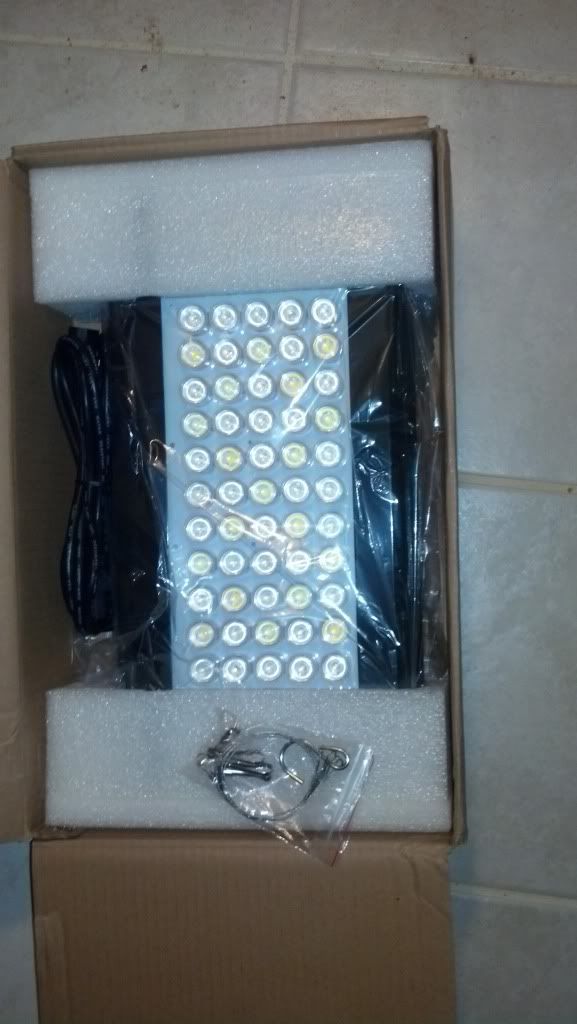
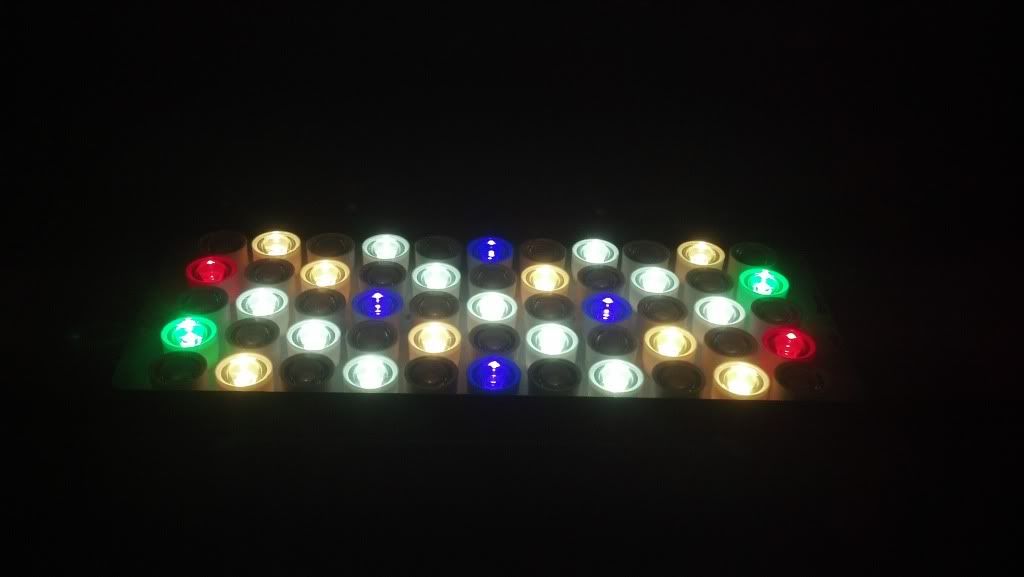
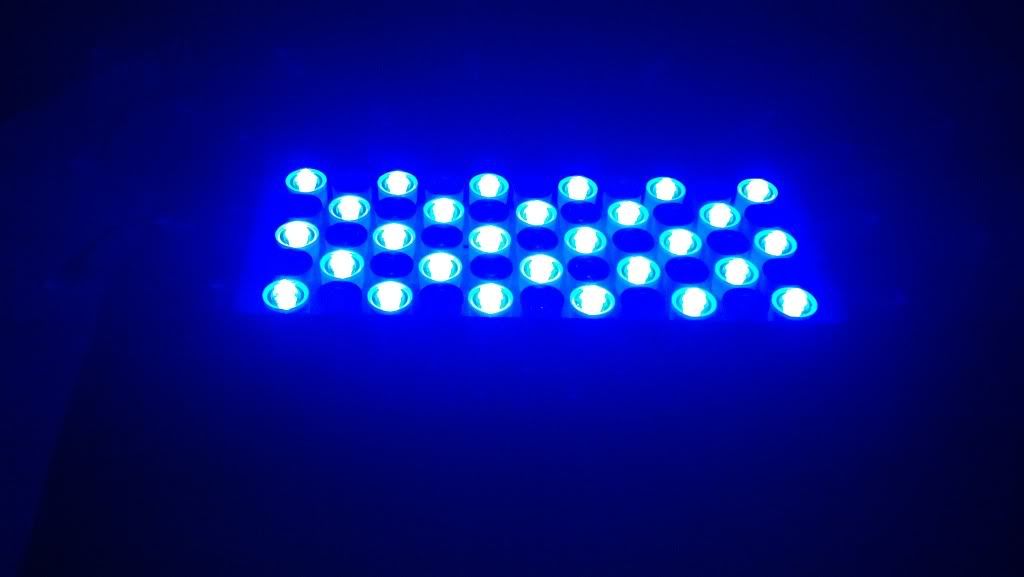
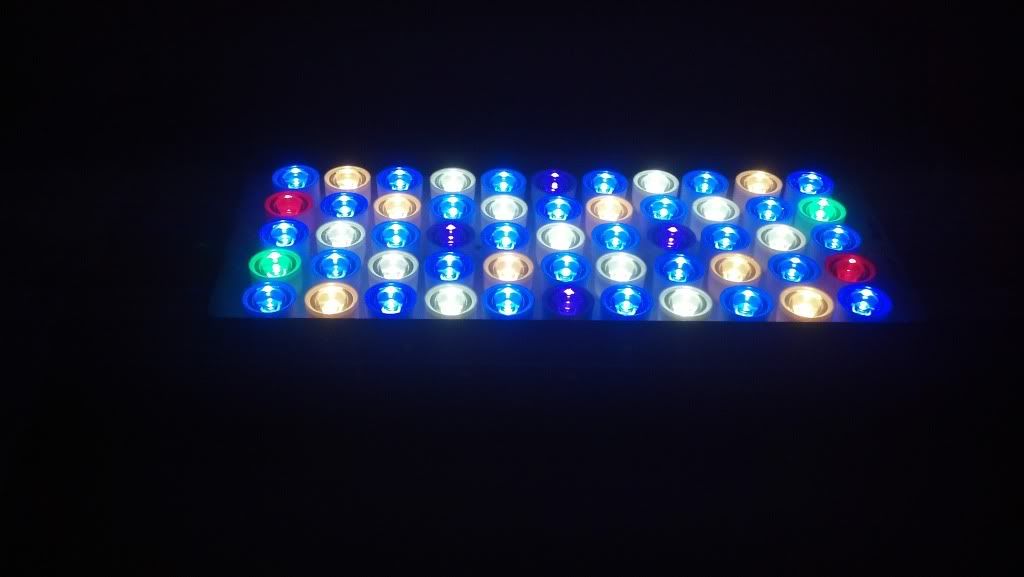 [/quote]
[/quote]
So I tried a bunch of different methods before I realized that the control line was outputting 10V. There must be a resistor in the ballast pulling that channel up to 10V, so i needed to sink the power not send it power. All I needed to do was throw in an NPN transistor and feed it a 5V pwm signal from my arduino. :BB) Additionally, my ballasts required a 10V on/off signal to kill the lights at night. So I popped in a relay and boom, I’m done. PBJ! Here is what the control box looks like. I’m using an arduino pro micro, but anything with 2 digital outputs, 2 pwm outputs, and is I2C capable will work.
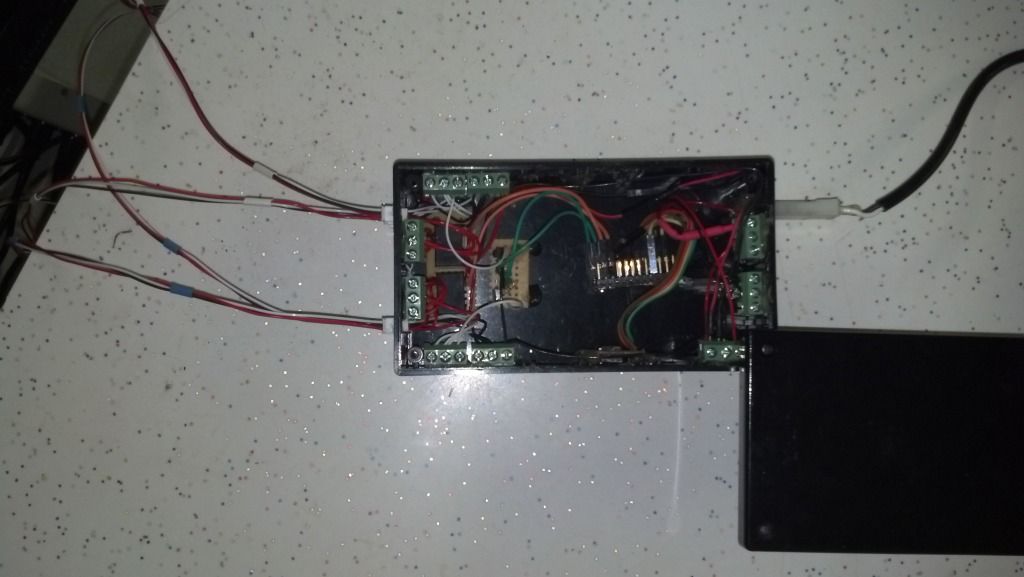
Here is the schematic if anybody is interested. It’s important to note that I drew the default relay setting wrong. You have to power the relay for the lights to turn on. I didn’t want my controller to fail and have all the fixtures blast my corals. This way, if it fails, the lights turn off. The arduino is also connected to a Sparkfun real time clock.
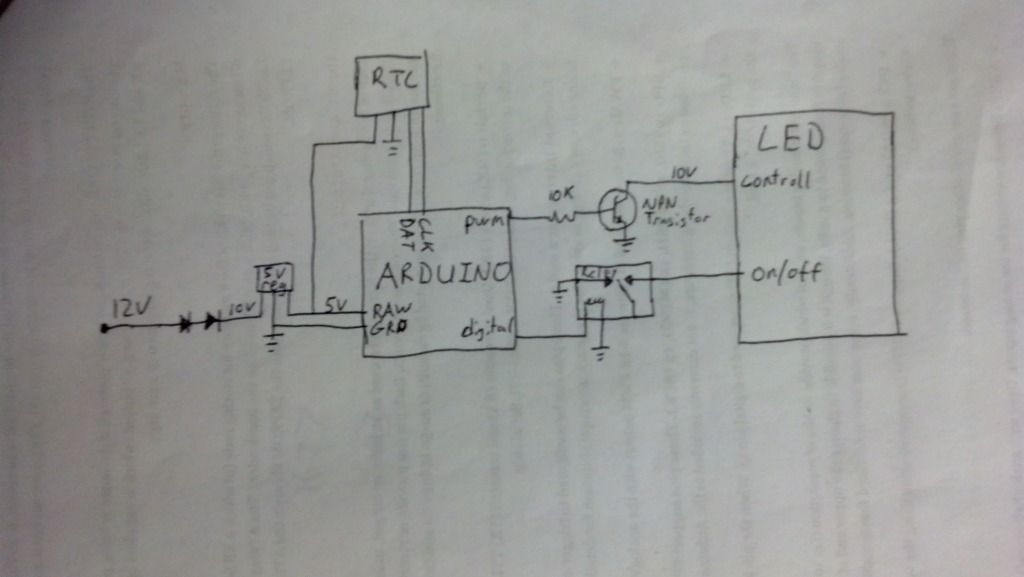
One of the things I definitely didn’t want was to have ONLY arduino control. I like having the knobs in case friends come over or I’m selling frags and people want to see the corals under different lighting than whatever is on at that time of day. So I added a switch to each channel to toggle between knob control and arduino control. That way I don’t have to get the computer out and upload new code any time I want to see a different spectrum.
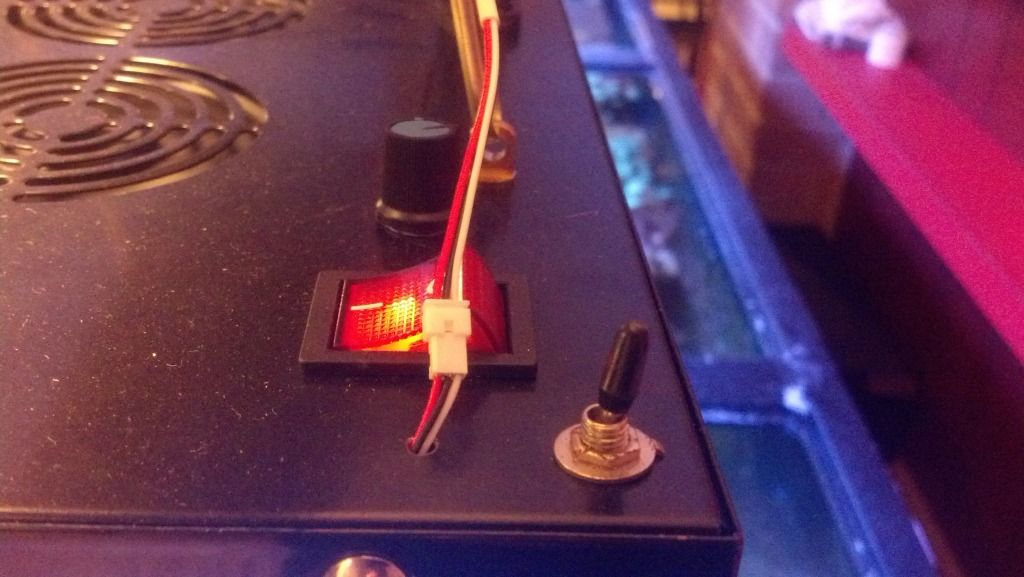
Here are some pics of the tank. I’m starting the fixtures 7" off the water surface at 10% power, running 4hrs of whites and 8hrs of blues. I’m having some bad shadowing problems right now and am open to suggestions. I’m considering pulling the optics off some of them.
